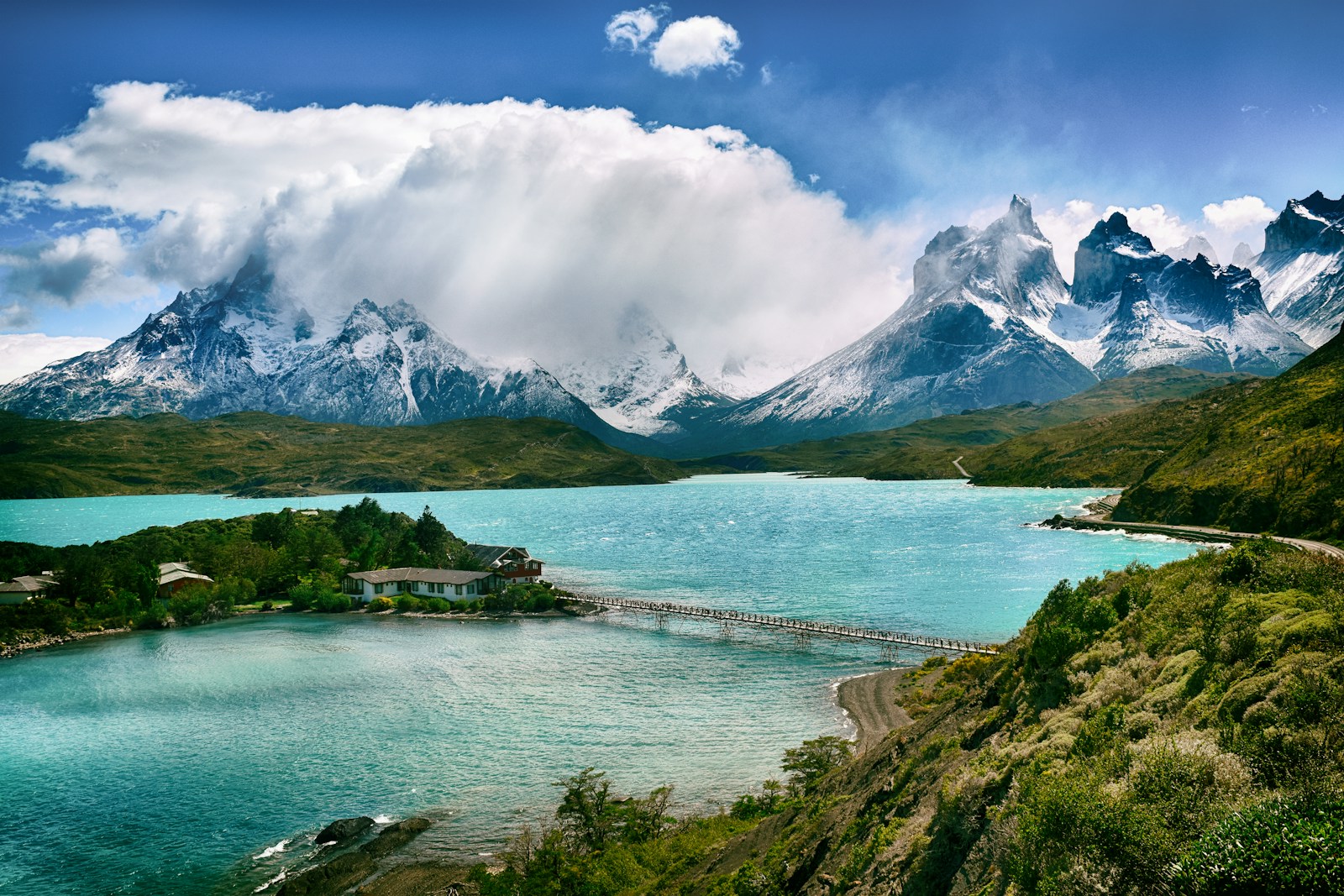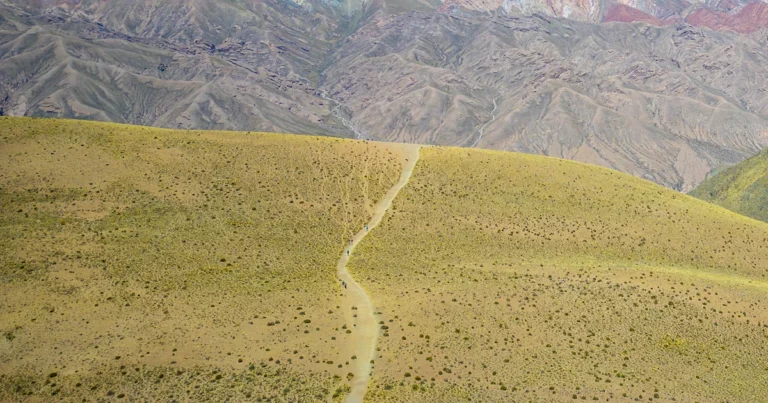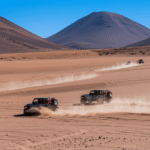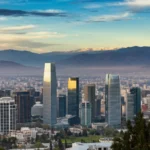Support our educational content for free when you purchase through links on our site. Learn more
12 Epic Chile Outdoor Activities and Tours You Can’t Miss in 2025 🌎
Ready to swap your usual vacation for an adrenaline-fueled adventure? Chile’s jaw-dropping landscapes—from the windswept peaks of Patagonia to the otherworldly Atacama Desert—offer some of the most diverse and thrilling outdoor activities on the planet. Whether you’re hiking the iconic Torres del Paine circuit, skiing volcanic slopes near Santiago, or stargazing beneath the clearest skies on Earth, Chile’s outdoor tours deliver unforgettable experiences that will leave you breathless (and not just from the altitude!).
We’ve packed this guide with insider tips, expert gear recommendations, and must-try adventures that cover every corner of Chile’s vast wilderness. Curious about how to survive Patagonian winds or where to find the best sandboarding dunes? Keep reading—we spill all the secrets to help you plan your ultimate Chilean escapade.
Key Takeaways
- Chile offers 12 must-do outdoor activities including trekking, skiing, kayaking, volcano climbing, and desert adventures.
- Best seasons vary by region: Patagonia shines October–April; Atacama is great year-round; ski season peaks June–September.
- Safety and sustainability matter: Prepare for altitude sickness, respect park rules, and pack eco-friendly gear.
- Top guides and tours like EcoCamp Patagonia and Cascada Expediciones elevate your experience with expert knowledge and support.
- Gear smart: Lightweight, layered clothing and reliable equipment like MSR tents and Katadyn filters make all the difference.
Ready to explore Chile’s wild side? Let’s dive into the ultimate outdoor adventure guide!
Table of Contents
- ⚡️ Quick Tips and Facts About Chile Outdoor Activities
- 🌄 The Ultimate Guide to Chile’s Outdoor Adventure History and Landscape
- 🏞️ Top 12 Must-Do Outdoor Activities in Chile for Every Adventurer
- 1. Trekking the Torres del Paine Circuit
- 2. Skiing and Snowboarding in the Andes Mountains
- 3. Kayaking and Canoeing in Patagonia’s Fjords
- 4. Volcano Hiking and Climbing Expeditions
- 5. Desert Adventures: Sandboarding and Stargazing in Atacama
- 6. Wildlife Watching and Birding Tours
- 7. Surfing the Pacific Coast Waves
- 8. Horseback Riding Through Chilean Countryside
- 9. Fishing and Fly-Fishing in Pristine Rivers
- 10. Mountain Biking Trails Across Diverse Terrains
- 11. Camping and Glamping Under the Southern Skies
- 12. Caving and Exploring Chile’s Underground Wonders
- 🧳 How to Choose the Best Outdoor Tours and Guides in Chile
- 🌐 Essential Gear and Packing Tips for Chile’s Outdoor Adventures
- 🚗 Getting Around: Transportation Options for Outdoor Explorers
- 🍽️ Food and Drink: Fueling Your Outdoor Adventures in Chile
- 🌿 Sustainable and Eco-Friendly Outdoor Tourism in Chile
- 🛌 Where to Stay: Best Accommodations for Outdoor Enthusiasts
- 📅 Best Seasons and Weather for Outdoor Activities in Chile
- 🎒 Insider Tips and Safety Advice for Outdoor Adventures
- 🎯 Conclusion: Why Chile Should Be Your Next Outdoor Playground
- 🔗 Recommended Links for Planning Your Chile Outdoor Trip
- ❓ Frequently Asked Questions About Chile Outdoor Activities
- 📚 Reference Links and Resources
⚡️ Quick Tips and Facts About Chile Outdoor Activities
- Best time to visit? Patagonia = mid-October–March, Atacama = year-round, ski season = June–September.
- Currency: Chilean Peso (CLP). Cards work in towns, but carry cash for mountain huts and rural ferias.
- Language: Spanish. In the south you’ll hear plenty of Mapudungun greetings; in Rapa Nui, Polynesian vibes.
- Altitude sickness is real: Anything above 2 500 m (Atacama, Altiplano) – hydrate, ascend gradually, consider acetazolamide.
- Park passes: Torres del Paine “Q” ticket must be booked online in high season – they sell out!
- Sustainability: Chile banned single-use plastics in 2022 – pack a filter bottle and refill instead of buying plastic.
- Cell coverage: Entel and Movistar have the widest 4G; in Patagonia expect black holes – download offline maps.
- Tipping: 10 % is standard in restaurants; on tours tip guides CLP 10 k–15 k per person per day.
- Emergency: 131 (mountain), 132 (fire), 133 (police). Download the SERNATUR “SOS” app before you go.
- Fun fact: Chile has 41 national parks – that’s more than 1 for every 400 000 residents!
🌄 The Ultimate Guide to Chile’s Outdoor Adventure History and Landscape

Chile’s absurdly thin geography (4 300 km long, averages 177 km wide) crams deserts, glaciers, volcanoes and beaches into one country. The first organised ascent of Ojos del Salado happened only in 1937 – compare that to the Alps where climbs were logged in the 1700s. Why? Patagonia’s weather is so ferocious that early explorers labelled parts “the storm corridor”. Today CONAF (the forest service) and private outfitters like Cascada Expediciones have turned once-inaccessible frontiers into bucket-list playgrounds.
We once asked a ranger in Torres del Paine how many days of sun they get. He laughed: “We measure in hours, not days.” Yet that capricious climate is exactly what carves those granite horns and keeps the crowds refreshingly thin outside high season.
🏞️ Top 12 Must-Do Outdoor Activities in Chile for Every Adventurer
1. Trekking the Torres del Paine Circuit
The “O” and “W” routes are South-America’s answer to Nepal’s Annapurna. Expect guanacos, calving glaciers, and the Instagram-famous sunrise towers. We recommend the full “O” if you have 8–9 days – you’ll see the backside of the park where pumas outnumber people.
| Trek Comparison | Distance | Difficulty | Best Months |
|---|---|---|---|
| W Trek | 76 km | Moderate | Oct–Apr |
| Full Circuit “O” | 110 km | Demanding | Nov–Mar |
| Day hike Mirador Las Torres | 22 km | Moderate | Year-round |
Pro-tip: Book Refugios early or carry a lightweight tent – the MSR Hubba Hubba NX is our go-to for Patagonian winds.
👉 CHECK PRICE on: Amazon | REI | MSR Official
2. Skiing and Snowboarding in the Andes Mountains
Chile’s resorts sit on a volcanic spine – think lava + powder. Valle Nevado, La Parva and El Colorado form the Tres Valles just 46 km from Santiago. Further south, Nevados de Chillán offers hot-spring soak laps. Season runs June–September with July holding the most reliable snow.
We skied a 30 cm dump at La Parva, then sipped terremotos (pipeño + pineapple ice-cream) in a mountain yurt – surreal. Heli-ski outfitter SASS Global Travel accesses 4 000 m descents on the Maipo valley rim.
3. Kayaking and Canoeing in Patagonia’s Fjords
Paddle between house-sized icebergs on Grey Lake or multi-day the Última Esperanza Sound where dolphins surf your bow wave. Dress for 5 °C water – dry-suit mandatory. We love the Palm Atom for its rear-entry zip that doesn’t leak during rolls.
👉 Shop Palm Atom on: Amazon | Palm Official
4. Volcano Hiking and Climbing Expeditions
Chile boasts 2 000+ volcanoes, 90 active. Villarrica (2 847 m) is the poster child – you can sled down the crater on your butt in summer. For a real burner, try Ojos del Salado (6 893 m), world’s highest active volcano. Permit required from DIFROL and acclimatise on nearby Mulas Muertas.
5. Desert Adventures: Sandboarding and Stargazing in Atacama
The Atacama is so dry that NASA tests Mars rovers here. Rent a sandboard at Dragon Hill (350 m dune) in Iquique or slide the Valle de Marte outside San Pedro. Night brings the clearest skies on Earth – the ALMA Observatory sits at 5 000 m and offers weekend tours.
6. Wildlife Watching and Birding Tours
Spot pudú (world’s smallest deer) in Chiloé, Andean condor in Rio Blanco, and Humboldt penguins on Cachagua beach. Bring a zoom – we use the Sony RX10 IV for its 600 mm reach without swapping lenses.
👉 Shop Sony RX10 IV on: Amazon | Sony Official
7. Surfing the Pacific Coast Waves
Northern breaks like El Gringo in Arica pack serious punch (up to 4 m barrels). Water stays around 16 °C year-round; 4/3 wetsuit suffices. Central spots such as Pichilemu host the annual WSL qualifying series – perfect left-hand point breaks.
8. Horseback Riding Through Chilean Countryside
Chile’s huaso culture rivals Argentina’s gaucho. Ride the Andes foothills outside Santa Cruz sipping cabernet between trots. Multi-day Cordillera Darwin expeditions in Tierra del Fuego end with a beach BBQ and craft beer from Cerveza Baguales.
9. Fishing and Fly-Fishing in Pristine Rivers
Chilean Patagonia’s turquoise rivers teem with brown and rainbow trout. Catch-and-release only on most private reserves. We hooked a 65 cm brown on the Simpson River using a #8 olive streamer. Guiding outfitter Yelcho Patagonia supplies waders and gourmet riverside sushi – yes, sushi!
10. Mountain Biking Trails Across Diverse Terrains
From San Pedro de Atacama’s lunar single-track to Pucón’s volcano bomber runs, Chile caters to all. The Andes-to-Pacific descent outside Santiago drops 2 000 m in 35 km – shuttle with Chile Bike Tours and finish with an empanada feast.
11. Camping and Glamping Under the Southern Skies
Swap tents for geodesic domes at EcoCamp Patagonia – the first fully sustainable accommodation in Torres del Paine. Each dome uses solar panels and composting toilets; wake up to carmine-red sunrises on the Towers.
12. Caving and Exploring Chile’s Underground Wonders
The Mylodons Cave (where 1895 explorers found extinct giant sloth fur) is just the teaser. Head south to Cueva del Medio for stalactites and indigenous Aonikenk art. Bring a headlamp – we like the Petzl Actik Core rechargeable unit.
👉 Shop Petzl Actik Core on: Amazon | Petzl Official
🧳 How to Choose the Best Outdoor Tours and Guides in Chile
- Check SERNATUR registration – legal operators must display the RUT number.
- Look for ASTO or ATOCH membership (Chilean tour-operator guilds).
- Read reviews on TripAdvisor and TourRadar – sort by “Most Recent”.
- Ask about guide-to-client ratio – 1:6 is sweet for trekking, 1:4 for technical climbing.
- Confirm insurance coverage – reputable agencies include AMG or BUPA evacuation.
We vetted Chile Expeditions for our Ojos del Salado attempt; they provided pulse-oximeters, hyperbaric bags and even a satellite phone for selfies at 6 000 m – literally.
🌐 Essential Gear and Packing Tips for Chile’s Outdoor Adventures
| Region | Must-Pack Item | Why It Matters |
|---|---|---|
| Patagonia | Hardshell + down jacket | Four seasons in one day |
| Atacama | Wide-brim hat + SPF 50 | UV index 11+ |
| Central Andes | Micro-spikes (Jun–Sep) | Ice on volcano scree |
| Lakes District | Quick-dry layers | Rain 200 days/yr |
Pack light but smart: merino undies, zip-off pants, and a collapsible Katadyn BeFree filter bottle – saves buying plastic in parks.
👉 Shop Katadyn BeFree on: Amazon | REI | Katadyn Official
🚗 Getting Around: Transportation Options for Outdoor Explorers
- Domestic flights: LATAM, Sky and JetSmart – book 3 months ahead for deals.
- Car rental: RentalCars.com compares local companies; 4×4 essential for dirt roads in Patagonia.
- Bus: long-distance coaches like Turbus have lie-flat “cama” seats and under-bus ski boxes.
- Bike boxes: allowed on most regional buses – wrap with foam to avoid scratches.
- Ferries: from Puerto Montt to Chiloé or Puerto Natales – reserve vehicles months ahead in summer.
🍽️ Food and Drink: Fueling Your Outdoor Adventures in Chile
Post-trek classics:
- Cazuela – hearty meat-and-veg soup, 20 g protein per bowl.
- Sopaipillas – fried pumpkin bread sold by street vendors; dip in pebre salsa.
- Mote con huesillo – wheat berries with dried peaches; natural isotonic.
- Craft beer scene: try Kuntsmann in Valdivia or Cerveza Austral in Patagonia.
- Wine: pack a boxed Concha y Toro Cabernet in your backpack – lightweight and recyclable.
🌿 Sustainable and Eco-Friendly Outdoor Tourism in Chile
✅ Leave-No-Trace is law in Torres del Paine – fines for feeding wildlife reach CLP 450 k.
✅ Refill not landfill: RefillChile lists 600+ free water stations.
✅ Carbon offset: SuddenRush plants native lenga trees for every km you trek.
❌ Avoid single-use butane cartridges – rent refillable LPG canisters in Puerto Natales.
🛌 Where to Stay: Best Accommodations for Outdoor Enthusiasts
| Property | Vibe | Best For |
|---|---|---|
| Yurtel Patagonia | Glamping yurts with wood-stoves | Post-trek recovery |
| Hotel AWA Puerto Varas | Lake-view hot-tub | Kayakers |
| Tierra Atacama | Solar-powered spa | Stargazers |
| Refugio El Volcán | Climber hostel at 2 000 m | Villarrica ascents |
Book via Booking.com for free cancellation up to 24 h before.
📅 Best Seasons and Weather for Outdoor Activities in Chile
- Ski / Board: June–September (powder July)
- Trekking Patagonia: October–April (windiest Dec-Jan)
- Atacama: Year-round; avoid Bolivian winter (Jan–Feb) for altiplano access roads.
- Surf central: March–May (swell + fewer crowds)
- Rafting Futaleufú: December–March (water level safe)
🎒 Insider Tips and Safety Advice for Outdoor Adventures
- Patagonian wind can hit 120 km/h – secure tent guy-lines with rocks, not just pegs.
- Volcanic ash is abrasive; wear goggles when descending Villarrica.
- Guides carry VHF radios – channel 4 is the mountain rescue freq.
- Tap water is potable country-wide except in rural San Pedro boreholes – ask locals.
- Travel insurance: World Nomads covers hiking up to 6 000 m if you add the “Explorer” pack.
- Sun at 4 000 m equals double UV – reapply SPF every 2 h, even cloudy.
- Puma encounters: stay calm, make yourself big, back away slowly – never run!
Still wondering how to squeeze all this into one trip? Scroll to our FAQ for sample itineraries or hop to our deep-dive on what are the best outdoor adventures to experience in Chile for more inspiration.
🎯 Conclusion: Why Chile Should Be Your Next Outdoor Playground

After trekking the jagged Torres del Paine, skiing volcanic slopes in the Andes, paddling icy Patagonian fjords, and sandboarding the dunes of Atacama, we can confidently say: Chile is a playground for every kind of outdoor adventurer. Its staggering diversity—from desert to glacier, ocean to volcano—means you can chase adrenaline or find serene solitude, often within a single day’s travel.
Yes, the weather can be a wild card, and logistics sometimes require patience, but that’s part of the charm. The rawness of the landscapes and the warmth of Chilean hospitality more than make up for it. Whether you’re a seasoned mountaineer, a casual hiker, or a curious culture seeker, Chile’s outdoor activities and tours offer unforgettable experiences that will keep you coming back.
If you’re wondering how to pack all this into one trip, start with the Torres del Paine “O” trek and a few days in Atacama for a taste of extremes. Add a ski day near Santiago or a surf session on the Pacific coast if time allows. And don’t forget to book your guides and accommodations early—especially in high season!
Ready to lace up your boots, grab your gear, and dive into Chile’s wild side? We’re here to help you plan every step of the way.
🔗 Recommended Links for Planning Your Chile Outdoor Trip
-
MSR Hubba Hubba NX Tent:
Amazon | REI | MSR Official Website -
Palm Atom Dry Suit for Kayaking:
Amazon | Palm Official Website -
Sony RX10 IV Camera:
Amazon | Sony Official Website -
Petzl Actik Core Headlamp:
Amazon | Petzl Official Website -
Katadyn BeFree Water Filter:
Amazon | REI | Katadyn Official Website -
Books on Chile Outdoor Adventures:
❓ Frequently Asked Questions About Chile Outdoor Activities
What are the best outdoor adventure tours in Chile?
Chile Vacay™ recommends tours that combine diverse landscapes and expert guiding. The Torres del Paine “O” trek with EcoCamp Patagonia is a classic multi-day adventure. For volcano climbing, outfitters like Chile Expeditions provide full-service packages including acclimatization and safety gear. Kayaking tours in Patagonia by Cascada Expediciones offer multi-day fjord explorations with wildlife spotting. For desert lovers, stargazing and sandboarding tours around San Pedro de Atacama by Tierra Atacama combine adrenaline and awe. Always check operator credentials and reviews.
Which national parks in Chile offer the most exciting hiking experiences?
- Torres del Paine National Park: The crown jewel with its iconic granite towers, glaciers, and turquoise lakes.
- Conguillío National Park: Ancient Araucaria forests and volcanic landscapes.
- Lauca National Park: High-altitude trekking with Andean wildlife and stunning altiplano vistas.
- Vicente Pérez Rosales National Park: Waterfalls, volcanoes, and temperate rainforests near Puerto Varas.
Each park offers unique ecosystems and trail difficulties, so pick based on your fitness and interests.
What outdoor activities can I do in Patagonia, Chile?
Patagonia is a wild outdoor lover’s dream:
- Multi-day trekking (Torres del Paine, Dientes de Navarino)
- Glacier hiking and ice climbing on Grey Glacier
- Kayaking in fjords and channels
- Horseback riding with local gauchos
- Wildlife watching (guanacos, condors, pumas)
- Mountain biking rugged trails
- Camping or glamping under pristine skies
The region’s remoteness means you’ll need good planning but the payoff is epic.
Are there guided tours for exploring Chile’s Atacama Desert?
Absolutely! Guided tours are essential to safely explore Atacama’s extreme environment. Options include:
- Stargazing tours with professional astronomers at ALMA or local observatories
- Sandboarding and dune buggy adventures in Valle de la Muerte and Dragon Hill
- Altiplano day trips to salt flats, geysers, and high-altitude lagoons
- Cultural tours visiting indigenous villages and petroglyph sites
Operators like Tierra Atacama and Cascada Expediciones offer customizable itineraries with expert guides.
How can I prepare for altitude sickness in Chile’s high regions?
Acclimatization is key. Spend a few days at intermediate altitudes (2 500–3 000 m) before ascending higher. Stay hydrated, avoid alcohol, and ascend slowly. Some travelers use acetazolamide (Diamox) after consulting a doctor. Listen to your body and descend if symptoms worsen.
What is the best way to get around Chile for outdoor adventures?
Domestic flights connect major hubs quickly, but renting a 4×4 vehicle offers flexibility for remote areas. Long-distance buses are comfortable and budget-friendly. Ferries are essential for island access (Chiloé, Tierra del Fuego). Book transport early during peak seasons.
📚 Reference Links and Resources
- Official Chile Tourism: Chile.travel – Adventure and Sports
- Cascada Expediciones & EcoCamp Patagonia: cascada.travel
- Overseas Adventure Travel (O.A.T.): oattravel.com
- Chile National Forest Corporation (CONAF): conaf.cl
- Chilean Tourism Board COVID-19 Updates: gob.cl
- SERNATUR (Chile’s National Tourism Service): sernatur.cl
- ALMA Observatory: almaobservatory.org
- Chilean Volcano Authority (DIFROL): difrol.cl
- TripAdvisor Chile Outdoor Activities: tripadvisor.com
- RentalCars.com Chile: rentalcars.com
For more curated adventure travel options, check out the Adventure Travel with O.A.T. | Overseas Adventure Travel page and explore their award-winning small group tours in Chile and beyond.






